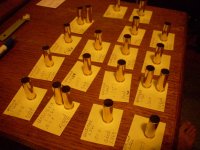snowman
Member
May be impossible to answer with any degree of certainty. Nevertheless I hear repeatedly both here and elsewhere that the only stupid question is the one that's not asked -so there it is.
Here may be some helpful information. I'm getting ready to load all my .44mag Starline cases the second time(bought them new and loaded & fired them all myself, with the same load and in the same gun). I really like the brass, but there is some significant variation in case length, and all are shorter than the standard length given in the reloading manuals of 1.280(from .009 to .017 shorter in their fired condition).
What I would like to do is trim them to the same length before sizing, in order to obtain a reasonably consistent crimp(not a perfectionist -just would like more consistency this time around). But I don't want them too short either, and don't know how short is too short. I know that the compression in the sizing die lengthens them, but I don't know how much.
Thought some experts here might be able to provide some enlightenment.
By the way, these are for long-range target work/fun in a 629 DX. Using a full charge of H110 under a 210gr JHP.
As always, many thanks for your time, friends.
Andy
Here may be some helpful information. I'm getting ready to load all my .44mag Starline cases the second time(bought them new and loaded & fired them all myself, with the same load and in the same gun). I really like the brass, but there is some significant variation in case length, and all are shorter than the standard length given in the reloading manuals of 1.280(from .009 to .017 shorter in their fired condition).
What I would like to do is trim them to the same length before sizing, in order to obtain a reasonably consistent crimp(not a perfectionist -just would like more consistency this time around). But I don't want them too short either, and don't know how short is too short. I know that the compression in the sizing die lengthens them, but I don't know how much.
Thought some experts here might be able to provide some enlightenment.
By the way, these are for long-range target work/fun in a 629 DX. Using a full charge of H110 under a 210gr JHP.
As always, many thanks for your time, friends.
Andy



